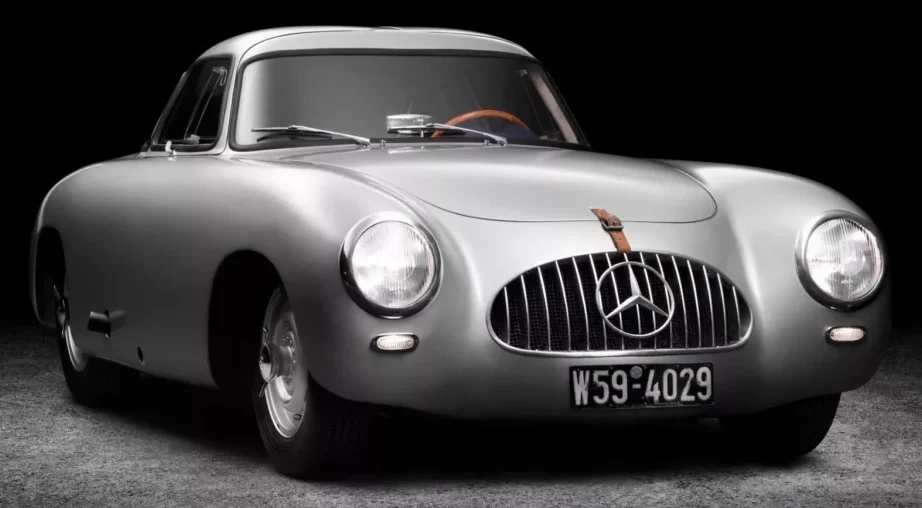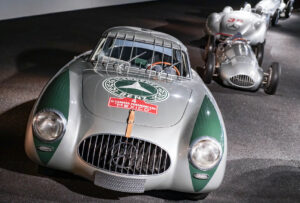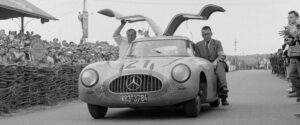The origins of the Mercedes W194
1. A bold idea: From luxury to performance
2. Triumph in Mexico: The Carrera Panamericana
A bold idea: From luxury to performance
The concept behind the W194 mirrored that of Jaguar’s C-Type: utilize as many components from existing vehicles as possible, but place them in a lightweight, custom-built frame. For Daimler-Benz, the donor vehicle was the luxurious Type 300. At first glance, choosing a stately sedan as the basis for a racing car might seem odd. However, the Type 300’s robust powertrain made it an ideal candidate. The comparison to Jaguar’s use of the XK engine—employed in both limousines and sports cars—highlights the ingenuity of repurposing proven components for competitive motorsport.
While the W194 engine modifications focused on enhancing performance—primarily through adjustments to the cylinder head and carburetion—traction and reliability remained early challenges. Nevertheless, the car demonstrated its potential, most notably with Hermann Lang’s victory at Le Mans in 1952, showcasing the newly refined body configuration.
Triumph in Mexico: The Carrera Panamericana
The W194’s greatest moment came later that year during the Carrera Panamericana, a grueling road race across Mexico. The team entered two coupes and a roadster, piloted by some of the era’s top drivers. To gain an edge in the power-hungry competition, engineers increased the engine displacement to 3,105 cc, unlocking additional horsepower.
Despite early tire issues and unforeseen challenges—including a dramatic incident where a vulture smashed through the windshield of Karl Kling and Hans Klenk’s car—the W194s dominated the race. Kling and Klenk secured a convincing victory, with a second W194 finishing close behind. The race not only highlighted German engineering prowess but also cemented the SL’s reputation as a formidable competitor on the global stage.
The end of a Beginning
Despite its success, the W194 program was discontinued before the 1953 season. However, its influence extended far beyond the racetrack. Lessons learned from the W194 shaped subsequent Mercedes-Benz developments, including the introduction of the low-pivot swing axle—a feature that would define the brand’s road cars for years to come.
Plans for an even lighter, narrower version of the car with fuel injection, a rear transaxle, and improved suspension were drawn up, but the focus shifted to the 1954 Grand Prix car and the legendary 300 SLR. Only one prototype of this next-generation W194 was ever built, leaving the original model as a singular chapter in Mercedes-Benz’s racing heritage.









